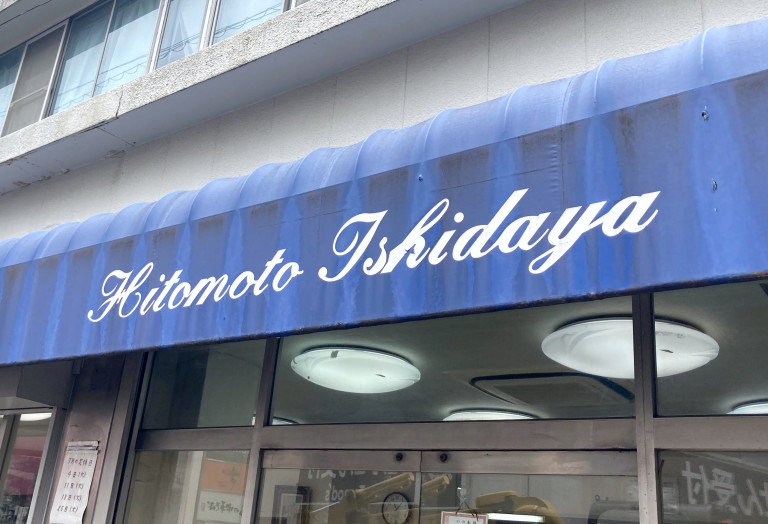
Turns out there’s a reason why this shop always has lines of customers!
When you live in Tokyo, or live in an area outside of the city and commute in, you get used to the train lines you’re always riding, which stations your train stops at and what kind of things can be found along the way. It also means that, since you’re mostly only ever taking that train, you don’t know anything about areas beyond that line.
For our own Japanese-language reporter Mr. Sato, that means he’s pretty much unfamiliar with Tokyo outside the major neighborhoods and the stations along the Chuo Line, which stretches out from Shinjuku to the northwestern fringes of the city. So when he happened to be visiting Kami-Itabashi Station on the Tobu Toju Line, north of the city center, he decided to take the opportunity to look around.
That’s when he spotted Hitomoto Ishidaya, a busy shop that had a never-ending stream of customers going in and out. Upon closer inspection, he learned it’s an old dessert shop that serves both Japanese and Western-style pastries and sweets, but such shops are a dime a dozen in Tokyo. What’s so special about this one? Naturally, he had to find out.
Hitomoto Ishidaya is just a one-minute walk from the south exit of Kami-Itabashi Station. It’s located in a small shopping street, in the same building as its factory. From the outside, you can see people lining up along the showcases.
▼ The short walk from Kami-Itabashi Station to Hitomoto Ishidaya
Mr. Sato had passed the shop on the way to his errand, and on his way back, he noticed that the line had not gotten any shorter. He assumed that to mean that there’s always a line there. With some time to kill, he went for a walk around the neighborhood, but even after he made his way back to Hitomoto Ishidaya, the line hadn’t shortened at all. In fact, it had gotten longer!
Curious beyond measure, Mr. Sato checked out the reviews online, only to find that the place was very highly rated. Apparently, they have a type of dorayaki, a red bean paste sandwich using castella cakes, that they sell in limited quantities, and people line up as soon as the shop opens to buy them. They’re so sought after that they’re referred to as “Mythical Dorayaki”. Of course, by the time Mr. Sato visited, they were already sold out.
Either way, the popularity of the shop intrigued him, so, in the spirit of journalism, he hopped in the line.
As he waited his turn, he browsed the sweets on display. There were both Western and Japanese-style desserts available, but it seemed like most of the customers bought Japanese sweets. What surprised him more, though, were the prices, which were relatively cheap compared to other sweets shops. One of the “legendary” dorayaki was just 180 yen (US$1.28), Chestnut Manju were 170 yen, Madeleines were 130 yen each, and Cream Cheese Sandwich Cookies were 140 yen each. Many people were buying 10 or 20 of one sweet at a time.
Mr. Sato decided to try the Butter Manju (120 yen each), and he bought 10. Manju are popular Japanese-style stuffed sweets, similar to certain mochi desserts but made with wheat flour instead of rice flour. But Mr. Sato had never heard of a “Butter Manju”. Would it just have butter inside, instead of the traditional red bean filling? From the name, Mr. Sato would guess it was a Western-style sweet, but since it’s a manju, it also sounded Japanese. It was quite a mystery.
Each one was wrapped in wax paper, and printed on the paper was the product information. There the product was listed as “Butter Man” as if it were actually a steamed bun (“man“), which further confounded Mr. Sato’s impression.
Unwrapped, it looked like this.
The color, at least, give off a sense of “butter”. It also looked like it was topped with some kind of cream, but the product’s expiration was dated five days from then, so it couldn’t be anything super-perishable.
Things became clearer when Mr. Sato cut it in half. The top part was some kind of meringue-like sweet, and the filling was tightly packed sweet white bean paste. But where did the butter come in?
The answer to that question came from a taste test. The dough encasing the filling was packed full of buttery goodness. With each bite, the rich, sweet flavor tickled even his nose, and the crunch of the meringue on top added a delightful contrasting texture. What became even more obvious with each bite was how fine the texture of the white bean paste was; it simply melted in Mr. Sato’s mouth.
It was clear that this was a very finely crafted sweet. And each one was only 120 yen! Apparently, they sell these directly from the factory so that they can produce them without preservatives or additives, allowing the flavor of each of the ingredients to really shine. For that reason, they don’t sell them online.
These Butter Manju (or Butter Man) are simple but have a very light, delicious flavor, that you can only find at Hitomoto Ishidaya. That explains why there’s always a line there! Mr. Sato sorely hopes that such a delicious sweets shop will be around forever, and he fully plans on trying that mythical dorayaki one day.
If you’re in the neighborhood, definitely consider trying them out! Itabashi is also where Mr. Sato happened to find some really delicious bread…So it might even be worth taking a deliberate trip there.
Restaurant information
Hitomoto Ishidaya / ひと本 石田屋
Address: Tokyo-to Itabashi-ku Kami-Itabashi 2-32-16
東京都板橋区上板橋2丁目32-16
Open 8:45 a.m.-5:45 p.m.
Closed Tuesdays
Images © SoraNews24
● Want to hear about SoraNews24’s latest articles as soon as they’re published? Follow us on Facebook and Twitter!
[ Read in Japanese ]

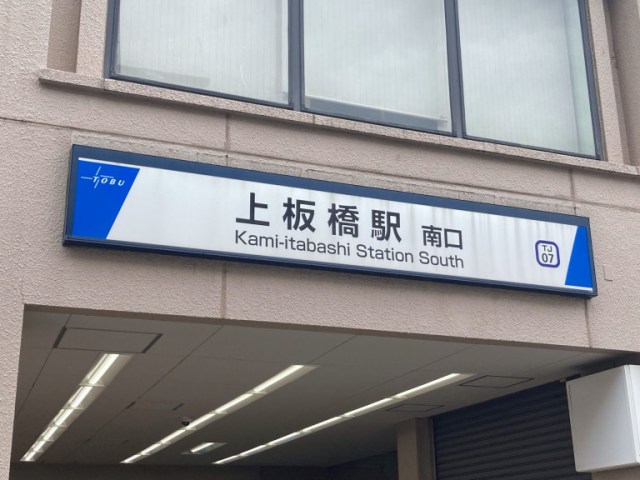
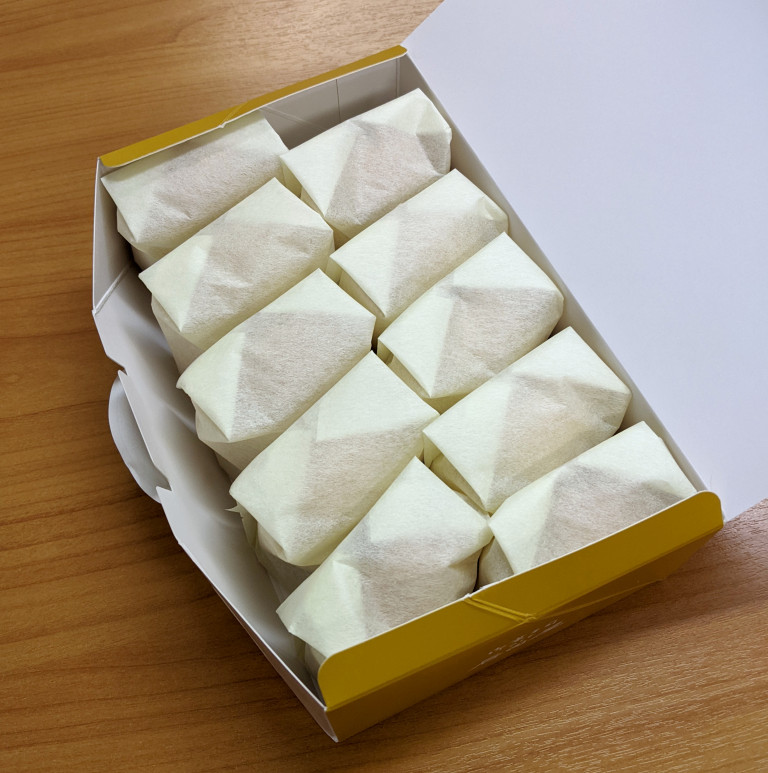

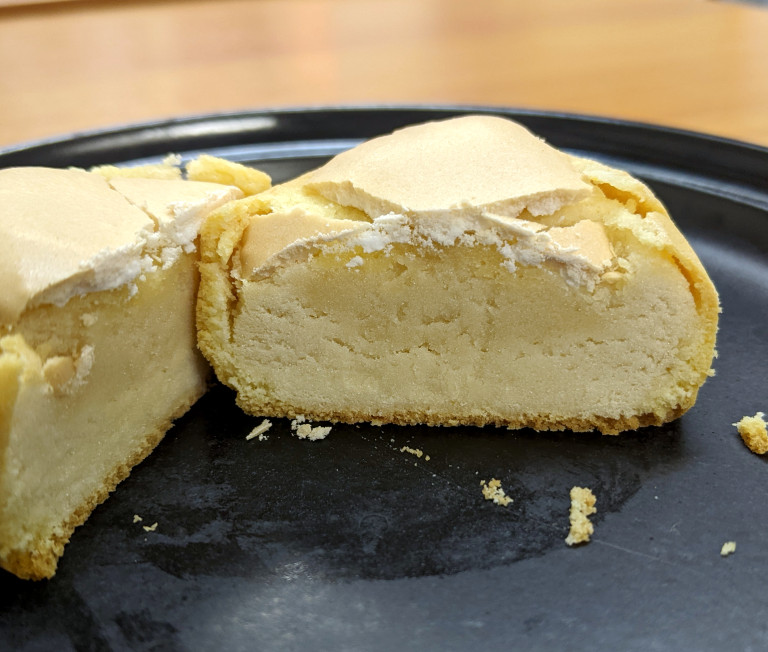
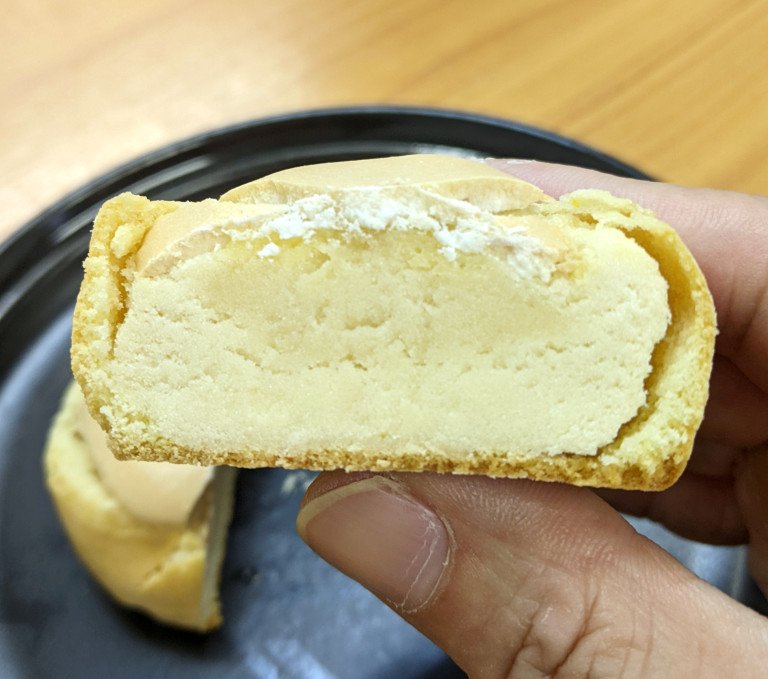
 Hidden in plain sight, low-key sweets shop surviving in Tokyo’s street market is a tasty treasure
Hidden in plain sight, low-key sweets shop surviving in Tokyo’s street market is a tasty treasure Gunma’s yaki manju, unknown to most Japanese people, are the best manju we’ve ever had
Gunma’s yaki manju, unknown to most Japanese people, are the best manju we’ve ever had Mr. Sato eats a Japanese sweet potato brulée so good that it just about knocks his socks off
Mr. Sato eats a Japanese sweet potato brulée so good that it just about knocks his socks off Choux pastry mania: Mr. Sato tries Beard Papa’s new Japanese-style cream puffs 【Taste Test】
Choux pastry mania: Mr. Sato tries Beard Papa’s new Japanese-style cream puffs 【Taste Test】 Mr. Sato stuffs himself at an all-you-can-eat bakery event and ascends to carb heaven【Pics】
Mr. Sato stuffs himself at an all-you-can-eat bakery event and ascends to carb heaven【Pics】 Japanese city loses residents’ personal data, which was on paper being transported on a windy day
Japanese city loses residents’ personal data, which was on paper being transported on a windy day Foreigner’s request for help in Tokyo makes us sad for the state of society
Foreigner’s request for help in Tokyo makes us sad for the state of society Should you add tartar sauce to Japanese curry rice? CoCo Ichi makes diners an unusual offer
Should you add tartar sauce to Japanese curry rice? CoCo Ichi makes diners an unusual offer Ghibli Park now selling “Grilled Frogs” from food cart in Valley of Witches
Ghibli Park now selling “Grilled Frogs” from food cart in Valley of Witches Seaside scenery, history, and so many desserts on Yokohama’s Akai Kutsu【Japan Loop Buses】
Seaside scenery, history, and so many desserts on Yokohama’s Akai Kutsu【Japan Loop Buses】 Historical figures get manga makeovers from artists of Spy x Family, My Hero Academia and more
Historical figures get manga makeovers from artists of Spy x Family, My Hero Academia and more Mt. Koya planning to instate visitor’s tax to cope with huge tourist numbers
Mt. Koya planning to instate visitor’s tax to cope with huge tourist numbers Beautiful Ghibli sealing wax kits let you create accessories and elegant letter decorations【Pics】
Beautiful Ghibli sealing wax kits let you create accessories and elegant letter decorations【Pics】 Suntory x Super Mario collaboration creates a clever way to transform into Mario【Videos】
Suntory x Super Mario collaboration creates a clever way to transform into Mario【Videos】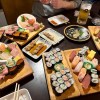 Shinjuku izakaya’s all-you-can-eat-and-drink plan is one of Tokyo’s best secret cheap eats
Shinjuku izakaya’s all-you-can-eat-and-drink plan is one of Tokyo’s best secret cheap eats McDonald’s new Happy Meals offer up cute and practical Sanrio lifestyle goods
McDonald’s new Happy Meals offer up cute and practical Sanrio lifestyle goods Japanese ramen restaurants under pressure from new yen banknotes
Japanese ramen restaurants under pressure from new yen banknotes French Fries Bread in Tokyo’s Shibuya becomes a hit on social media
French Fries Bread in Tokyo’s Shibuya becomes a hit on social media Studio Ghibli releases new action figures featuring Nausicaä of the Valley of the Wind characters
Studio Ghibli releases new action figures featuring Nausicaä of the Valley of the Wind characters New private rooms on Tokaido Shinkansen change the way we travel from Tokyo to Kyoto
New private rooms on Tokaido Shinkansen change the way we travel from Tokyo to Kyoto Red light district sushi restaurant in Tokyo shows us just how wrong we were about it
Red light district sushi restaurant in Tokyo shows us just how wrong we were about it Tokyo Tsukiji fish market site to be redeveloped with 50,000-seat stadium, hotel, shopping center
Tokyo Tsukiji fish market site to be redeveloped with 50,000-seat stadium, hotel, shopping center All-you-can-drink Starbucks and amazing views part of Tokyo’s new 170 meter-high sky lounge
All-you-can-drink Starbucks and amazing views part of Tokyo’s new 170 meter-high sky lounge Studio Ghibli releases Kiki’s Delivery Service chocolate cake pouches in Japan
Studio Ghibli releases Kiki’s Delivery Service chocolate cake pouches in Japan New definition of “Japanese whiskey” goes into effect to prevent fakes from fooling overseas buyers
New definition of “Japanese whiskey” goes into effect to prevent fakes from fooling overseas buyers Our Japanese reporter visits Costco in the U.S., finds super American and very Japanese things
Our Japanese reporter visits Costco in the U.S., finds super American and very Japanese things Studio Ghibli unveils Mother’s Day gift set that captures the love in My Neighbour Totoro
Studio Ghibli unveils Mother’s Day gift set that captures the love in My Neighbour Totoro More foreign tourists than ever before in history visited Japan last month
More foreign tourists than ever before in history visited Japan last month New Pokémon cakes let you eat your way through Pikachu and all the Eevee evolutions
New Pokémon cakes let you eat your way through Pikachu and all the Eevee evolutions Sales of Japan’s most convenient train ticket/shopping payment cards suspended indefinitely
Sales of Japan’s most convenient train ticket/shopping payment cards suspended indefinitely Sold-out Studio Ghibli desktop humidifiers are back so Totoro can help you through the dry season
Sold-out Studio Ghibli desktop humidifiers are back so Totoro can help you through the dry season Japanese government to make first change to romanization spelling rules since the 1950s
Japanese government to make first change to romanization spelling rules since the 1950s Ghibli founders Toshio Suzuki and Hayao Miyazaki contribute to Japanese whisky Totoro label design
Ghibli founders Toshio Suzuki and Hayao Miyazaki contribute to Japanese whisky Totoro label design Doraemon found buried at sea as scene from 1993 anime becomes real life【Photos】
Doraemon found buried at sea as scene from 1993 anime becomes real life【Photos】 Tokyo’s most famous Starbucks is closed
Tokyo’s most famous Starbucks is closed One Piece characters’ nationalities revealed, but fans have mixed opinions
One Piece characters’ nationalities revealed, but fans have mixed opinions We asked a Uniqlo employee what four things we should buy and their suggestions didn’t disappoint
We asked a Uniqlo employee what four things we should buy and their suggestions didn’t disappoint Princesses, fruits, and blacksmiths: Study reveals the 30 most unusual family names in Japan
Princesses, fruits, and blacksmiths: Study reveals the 30 most unusual family names in Japan Tokyo’s spicy cod roe ice cream: An unexpected dessert that tastes about like what you’d expect
Tokyo’s spicy cod roe ice cream: An unexpected dessert that tastes about like what you’d expect Mr. Sato goes to a Korean-style shaved ice cafe, makes several mistakes, still has a great time
Mr. Sato goes to a Korean-style shaved ice cafe, makes several mistakes, still has a great time New Japanese vending machines to love: The ones that sell Hiroshima’s best dessert!
New Japanese vending machines to love: The ones that sell Hiroshima’s best dessert! Mr. Sato attempts to conquer mountains of shaved ice at all-you-can-eat event
Mr. Sato attempts to conquer mountains of shaved ice at all-you-can-eat event Japanese cafe tops its shaved ice with fire for an impossibly delicious treat【Video】
Japanese cafe tops its shaved ice with fire for an impossibly delicious treat【Video】 We try the world’s first Kit Kat sandwich at First Kitchen, find out it’s like a bad date
We try the world’s first Kit Kat sandwich at First Kitchen, find out it’s like a bad date Taiwanese Peppered Pork Buns sold in Tokyo are packed with layers of flavor
Taiwanese Peppered Pork Buns sold in Tokyo are packed with layers of flavor We try a dubious-sounding “wet dorayaki” and are in for more than one surprise
We try a dubious-sounding “wet dorayaki” and are in for more than one surprise New Kumo Cloud Cake from Tokyo is the Japanese sweet on everyone’s lips right now
New Kumo Cloud Cake from Tokyo is the Japanese sweet on everyone’s lips right now Nagoya serves up fried chicken with sweet beans, whipped cream, and a strawberry on top
Nagoya serves up fried chicken with sweet beans, whipped cream, and a strawberry on top Mr. Sato channels his inner Elsa, books a night at a Hokkaido ice hotel 【Photos】
Mr. Sato channels his inner Elsa, books a night at a Hokkaido ice hotel 【Photos】 Mr. Sato returns to the line, waits three nights for an iPhone 11
Mr. Sato returns to the line, waits three nights for an iPhone 11 Douhua, a delicious tofu pudding, is Mr. Sato’s new favourite food
Douhua, a delicious tofu pudding, is Mr. Sato’s new favourite food Be Mr. Sato’s online friend, and he might take you to dinner, like he did with these foreign fans
Be Mr. Sato’s online friend, and he might take you to dinner, like he did with these foreign fans Diet donuts? Japan’s most popular donut chain releases new low-fat line, and we try them all
Diet donuts? Japan’s most popular donut chain releases new low-fat line, and we try them all
Leave a Reply